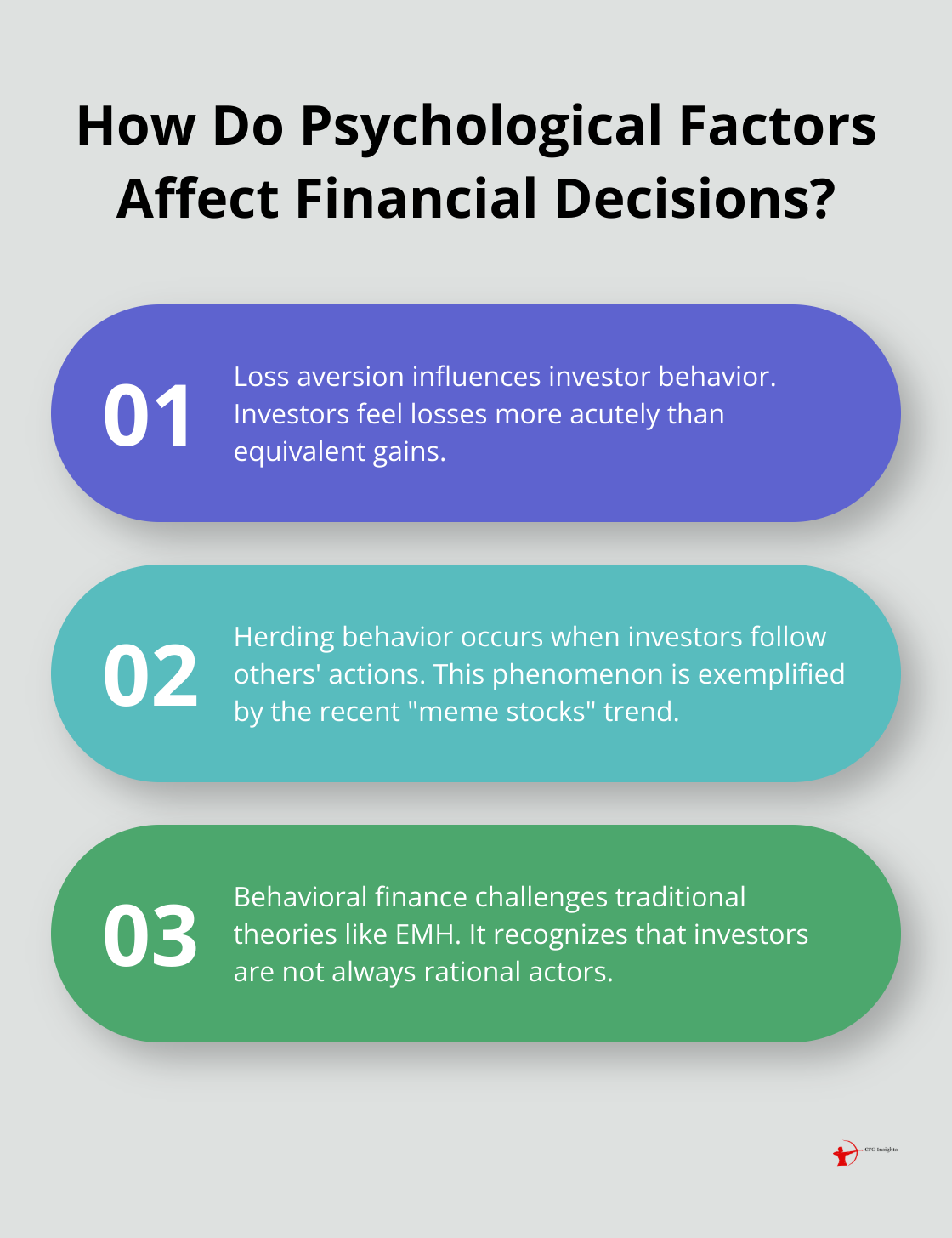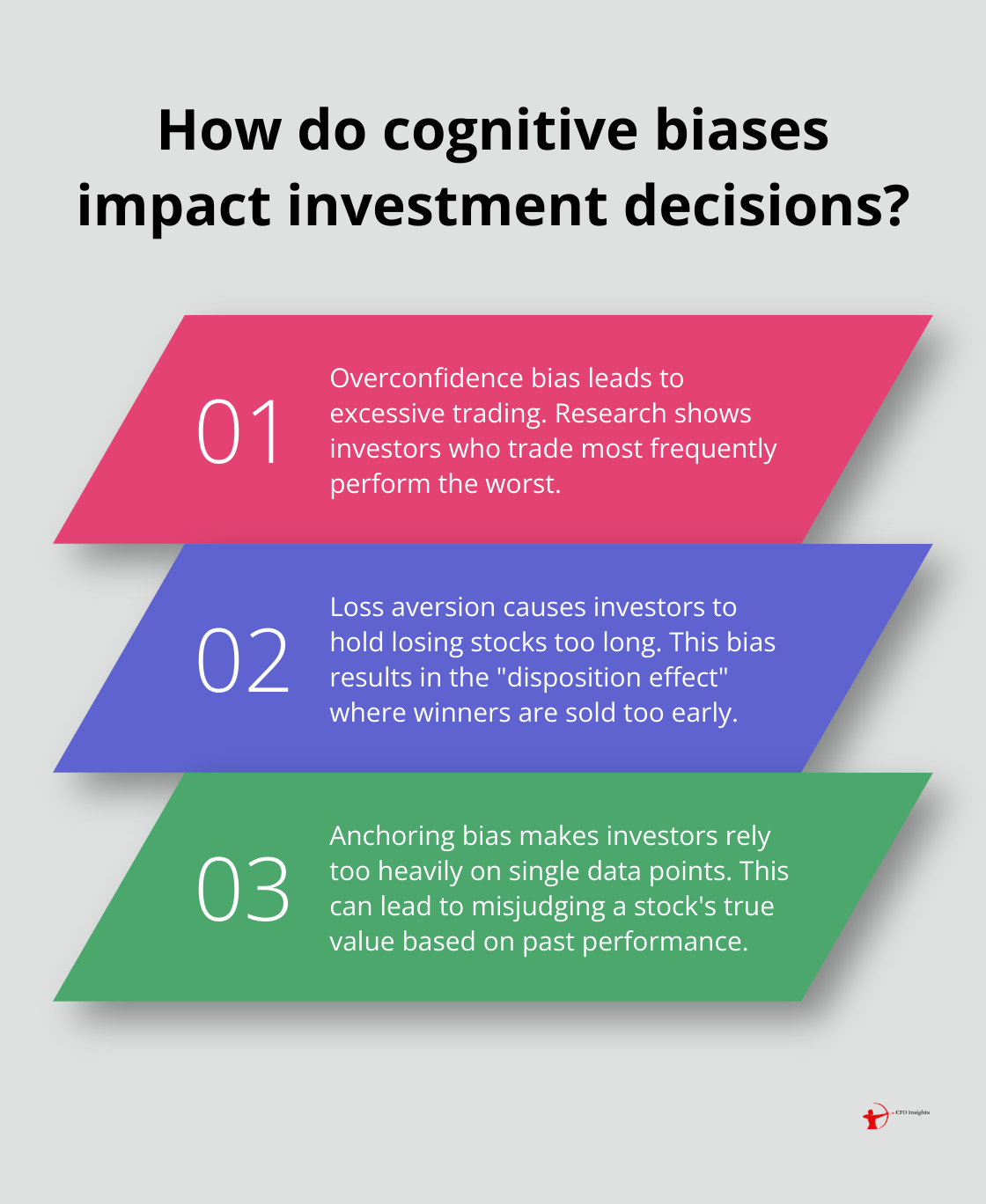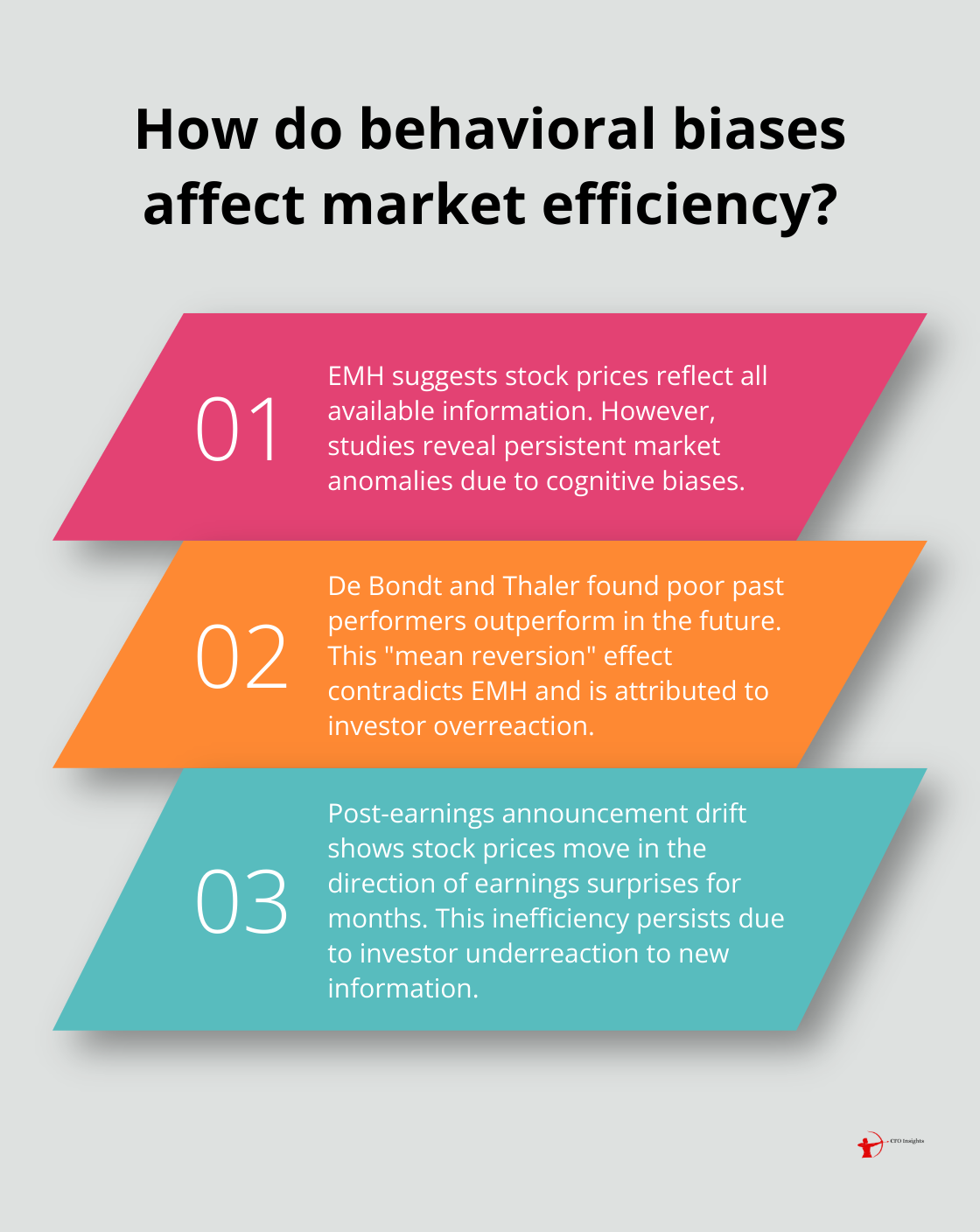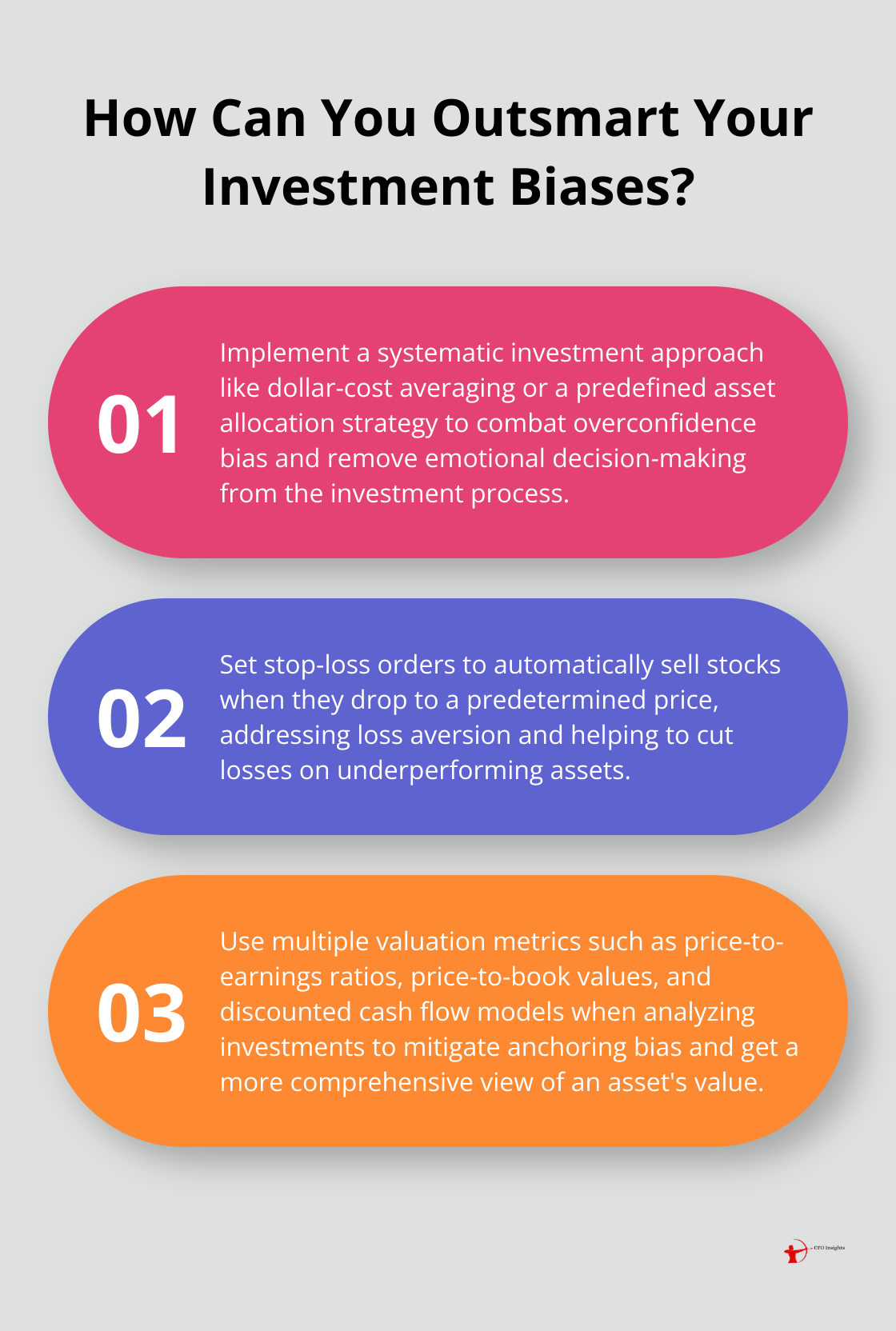At CFO Insights, we’re fascinated by the intersection of psychology and finance. Behavioral finance challenges traditional theories by examining how human emotions and cognitive biases influence financial decisions.
This field has profound implications for understanding market efficiency in finance. We’ll explore how behavioral factors can lead to market inefficiencies and impact investment strategies.
What Is Behavioral Finance?
Challenging Traditional Financial Theories
Behavioral finance questions conventional financial theories by examining how psychological factors influence financial decisions. This field recognizes that investors tend to have psychological and emotional biases which lead to irrationality, challenging the assumption that investors are always rational actors.

Traditional finance theories, such as the Efficient Market Hypothesis (EMH), assume that markets are rational and that prices fully reflect all available information. However, real-world evidence often contradicts these assumptions. The dot-com bubble of the late 1990s and the housing market crash of 2008 demonstrated that markets can be driven by irrational exuberance and fear, rather than purely by fundamentals.
Key Concepts in Behavioral Finance
Loss Aversion
One of the most significant concepts in behavioral finance is loss aversion. Studies show that investors feel the pain of losses more acutely than the pleasure of equivalent gains. This can lead to risk-averse behavior that may not always align with optimal investment strategies. For instance, investors might hold onto losing stocks too long in the hope of breaking even, rather than cutting their losses and reinvesting in more promising opportunities.
Herding Behavior
Another important concept is herding behavior. This occurs when investors follow the actions of others, often disregarding their own analysis. The phenomenon of “meme stocks” in recent years (where certain stocks gained popularity on social media platforms and experienced dramatic price increases) is a clear example of herding behavior in action.
Historical Development and Key Contributors
The field of behavioral finance began to take shape in the 1970s and 1980s, with psychologists Daniel Kahneman and Amos Tversky leading the way. Their work on prospect theory, which was first introduced in 1979 and further developed in 1992, describes how people make decisions involving risk and uncertainty, laying the foundation for much of behavioral finance.
Richard Thaler, often considered the father of behavioral economics, has made significant contributions to the field. His work on mental accounting (which explores how people categorize and evaluate economic outcomes) has important implications for understanding consumer behavior and financial decision-making.
Practical Implications for Investors
Understanding behavioral finance can help investors make better decisions. Recognizing our own biases allows us to implement strategies to counteract them. For example, setting predetermined rules for buying and selling stocks can help mitigate the impact of emotional decision-making during market volatility. Other strategies include keeping a trading journal to document emotional responses and decision triggers, and setting strict daily loss limits to prevent emotional trading.
Financial advisors and wealth managers increasingly incorporate behavioral finance principles into their practice. These insights help develop robust financial strategies for clients. Considering both the rational and irrational aspects of financial decision-making provides a more comprehensive and effective approach to financial management.
As we move forward, it’s essential to examine how these behavioral factors specifically impact market efficiency and challenge long-held assumptions about rational markets.
How Cognitive Biases Affect Financial Decisions
Overconfidence Bias
Overconfidence stands as one of the most prevalent biases in finance. Many investors overestimate their ability to pick winning stocks or time the market. Research by Barber and Odean found that investors who trade the most perform the worst, with men being more prone to overconfidence and trading more frequently than women.

To combat overconfidence, investors should implement a systematic investment approach. This could involve using dollar-cost averaging or adhering to a predefined asset allocation strategy. These methods help remove emotional decision-making from the investment process.
Loss Aversion
Loss aversion is the tendency to avoid losses over achieving equivalent gains. Broadly speaking, people feel pain from losses much more acutely than the pleasure from equivalent gains. This bias often leads to the “disposition effect,” where investors hold onto losing stocks too long and sell winners too early.
A practical way to address loss aversion is to set stop-loss orders. These automatically sell a stock when it drops to a predetermined price, removing the emotional struggle of deciding when to cut losses. Additionally, regular portfolio rebalancing can help ensure investors don’t hold onto underperforming assets due to an aversion to realizing losses.
Anchoring Bias
Anchoring occurs when investors rely too heavily on a single piece of information when making decisions. For example, an investor might anchor to a stock’s previous high price, believing it will return to that level even if market conditions have fundamentally changed.
To mitigate anchoring, investors should use multiple valuation metrics when analyzing investments. Looking at price-to-earnings ratios, price-to-book values, and discounted cash flow models provides a more comprehensive view of an asset’s value.
Real-World Implications
These biases can lead to significant market inefficiencies. An example of overconfidence bias occurred during the dot-com bubble of the late 1990s and early 2000s. The 2008 financial crisis (exacerbated by loss aversion, as many investors held onto declining mortgage-backed securities) serves as another stark reminder of the impact of cognitive biases on financial markets.
Understanding these biases is essential for making sound financial decisions. Many financial advisors (including those at CFO Insights) work with clients to develop strategies that account for these psychological factors, helping to create more robust and effective investment approaches.
As we examine the impact of cognitive biases on financial decision-making, it becomes clear that these psychological factors play a significant role in shaping market behavior. This understanding leads us to question the traditional assumptions of market efficiency and rational investor behavior.
How Behavioral Biases Challenge Market Efficiency
Questioning the Efficient Market Hypothesis
Behavioral finance research challenges the Efficient Market Hypothesis (EMH) by revealing how psychological factors create persistent market anomalies. The EMH suggests that stock prices reflect all available information, making it impossible to consistently outperform the market. However, studies have uncovered numerous instances where markets deviate from efficiency due to cognitive biases.

De Bondt and Thaler’s research found that stocks with poor past performance tend to outperform in the future, while past winners underperform. This “mean reversion” effect contradicts the EMH and can be attributed to investor overreaction. Investors often overvalue recent performance, which leads to mispricing that savvy investors can exploit.
Identifying Market Inefficiencies
Understanding behavioral biases helps investors identify and capitalize on market inefficiencies. The “post-earnings announcement drift” phenomenon shows that stock prices continue to move in the direction of earnings surprises for several months after the announcement. This inefficiency persists due to investor underreaction to new information.
Investors can implement a strategy of buying stocks with positive earnings surprises and shorting those with negative surprises to take advantage of this anomaly. However, they must act quickly, as the window of opportunity is often short-lived.
Risk Management in Behaviorally Influenced Markets
The impact of behavioral biases on market efficiency has significant implications for risk management. Traditional risk models often assume normal distributions of returns, but behavioral factors can lead to fat-tailed distributions with more extreme events than expected.
To address this, investors should consider using more sophisticated risk models that account for behavioral factors. For instance, the GARCH model can capture volatility clustering (a phenomenon where periods of high volatility tend to persist due to investor herding behavior).
Practical Strategies for Investors
Implementing stop-loss orders and diversifying across uncorrelated assets can help mitigate the impact of behavioral biases on portfolio risk. Investors should regularly stress-test portfolios under various behavioral scenarios to ensure robust risk management.
Some financial advisors (including those at CFO Insights) work with clients to develop strategies that account for these psychological factors, helping to create more effective investment approaches. These strategies often involve a combination of quantitative analysis and behavioral insights to identify potential market inefficiencies and manage risk effectively.
The Future of Behavioral Finance
As researchers continue to uncover new insights in behavioral finance, the potential for identifying and exploiting market inefficiencies will only grow. This evolving field promises to reshape our understanding of financial markets and provide investors with new tools to navigate the complex landscape of modern finance.
Final Thoughts
Behavioral finance has transformed our understanding of market behavior and challenged traditional assumptions about rationality and efficiency. This field reveals that markets are not always as efficient as classical theories suggest, with investors’ psychological tendencies leading to persistent anomalies and inefficiencies. These insights have significant implications for investment strategies, risk management, and financial decision-making, reshaping our understanding of what market efficiency in finance truly means.

The application of behavioral finance insights has become increasingly important in the financial industry. Investment firms develop strategies to exploit behavioral anomalies, while risk managers adapt their models to account for psychological factors’ impact on market volatility. For individual investors and financial professionals, integrating these insights into decision-making processes is essential to make more informed choices and develop effective investment strategies.
At CFO Insights, we recognize the importance of behavioral finance in shaping financial strategies. Our fractional CFO services incorporate these insights to help organizations optimize their financial performance and navigate complex markets. We combine traditional financial expertise with a deep understanding of behavioral factors to provide our clients with a comprehensive approach to financial management.




